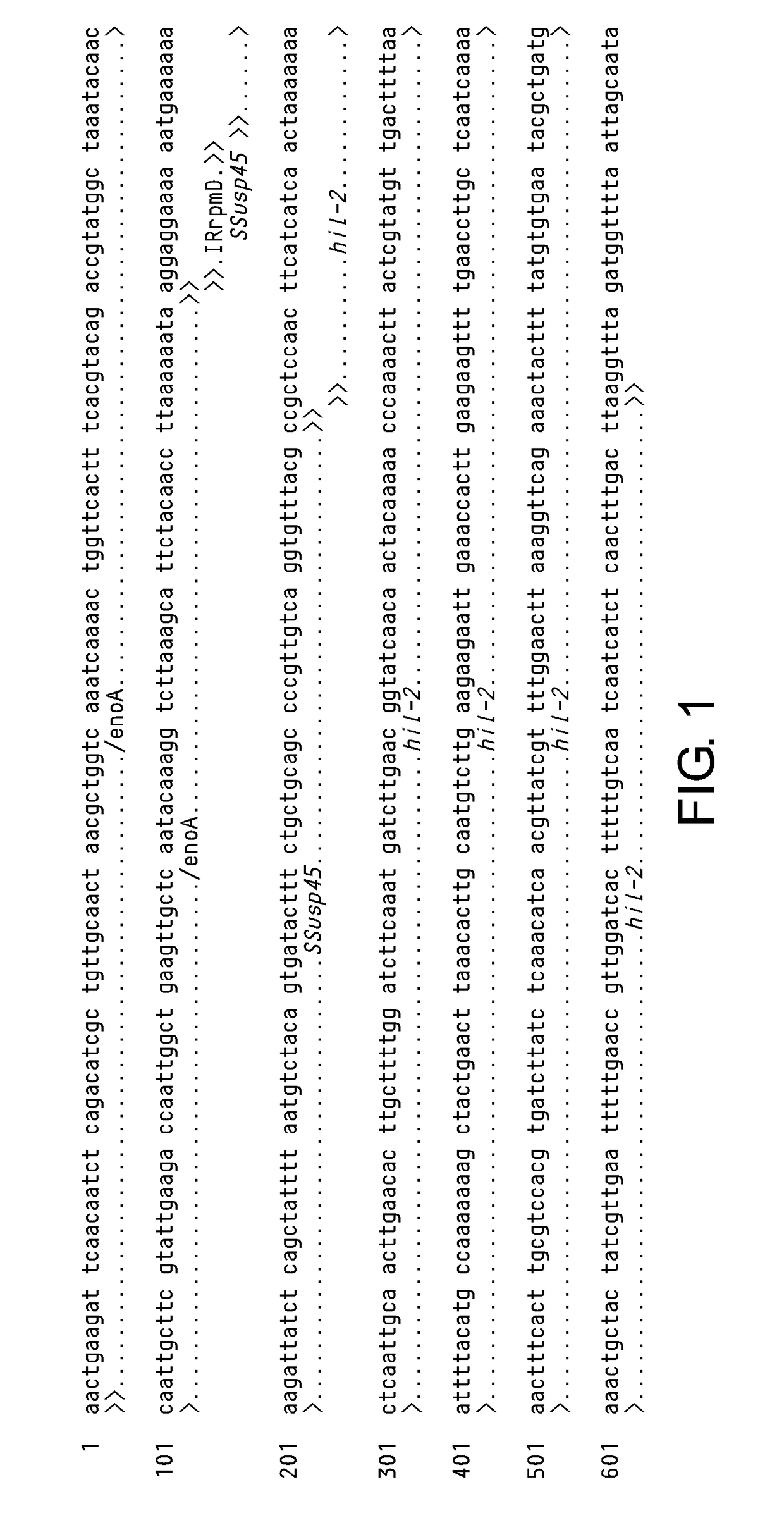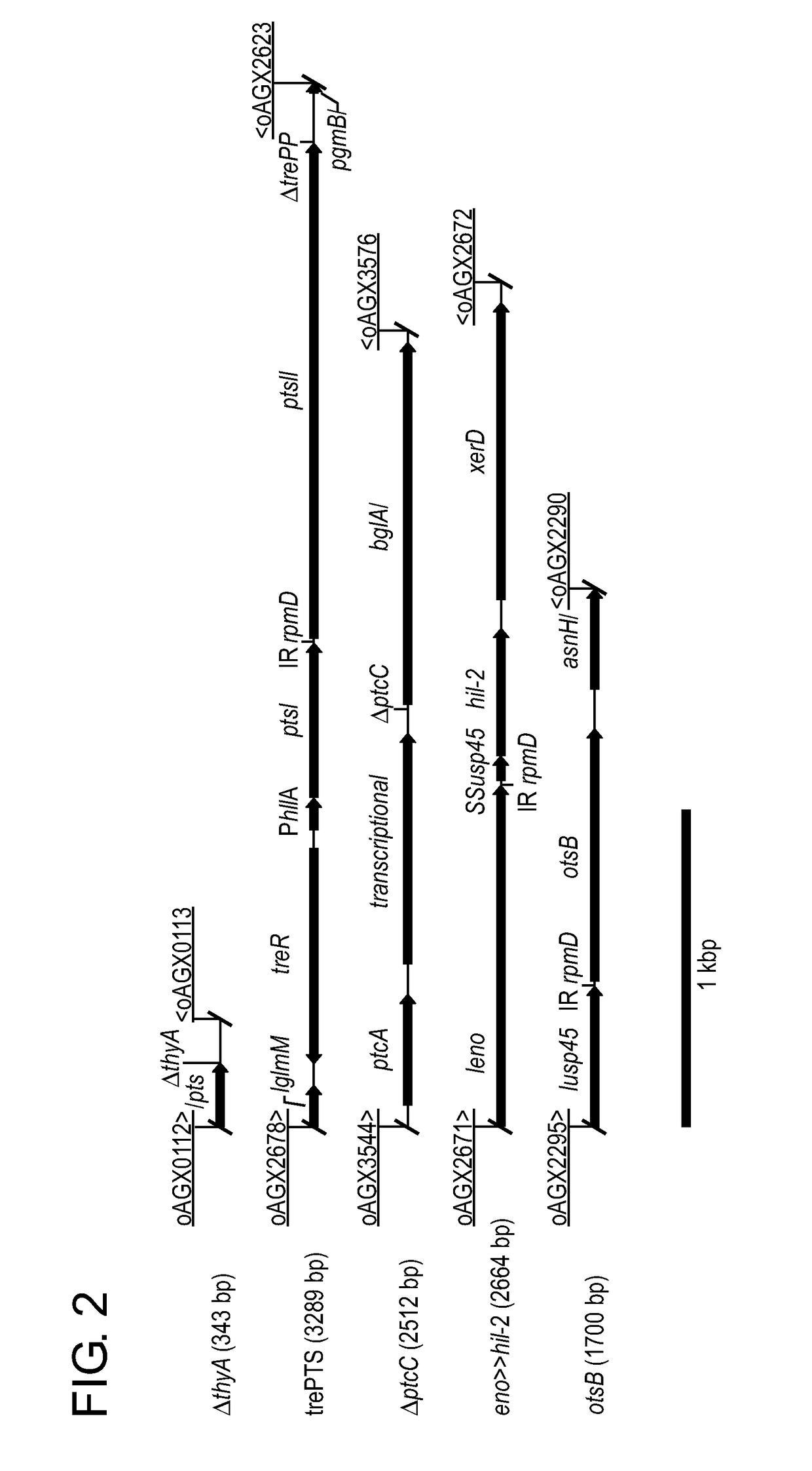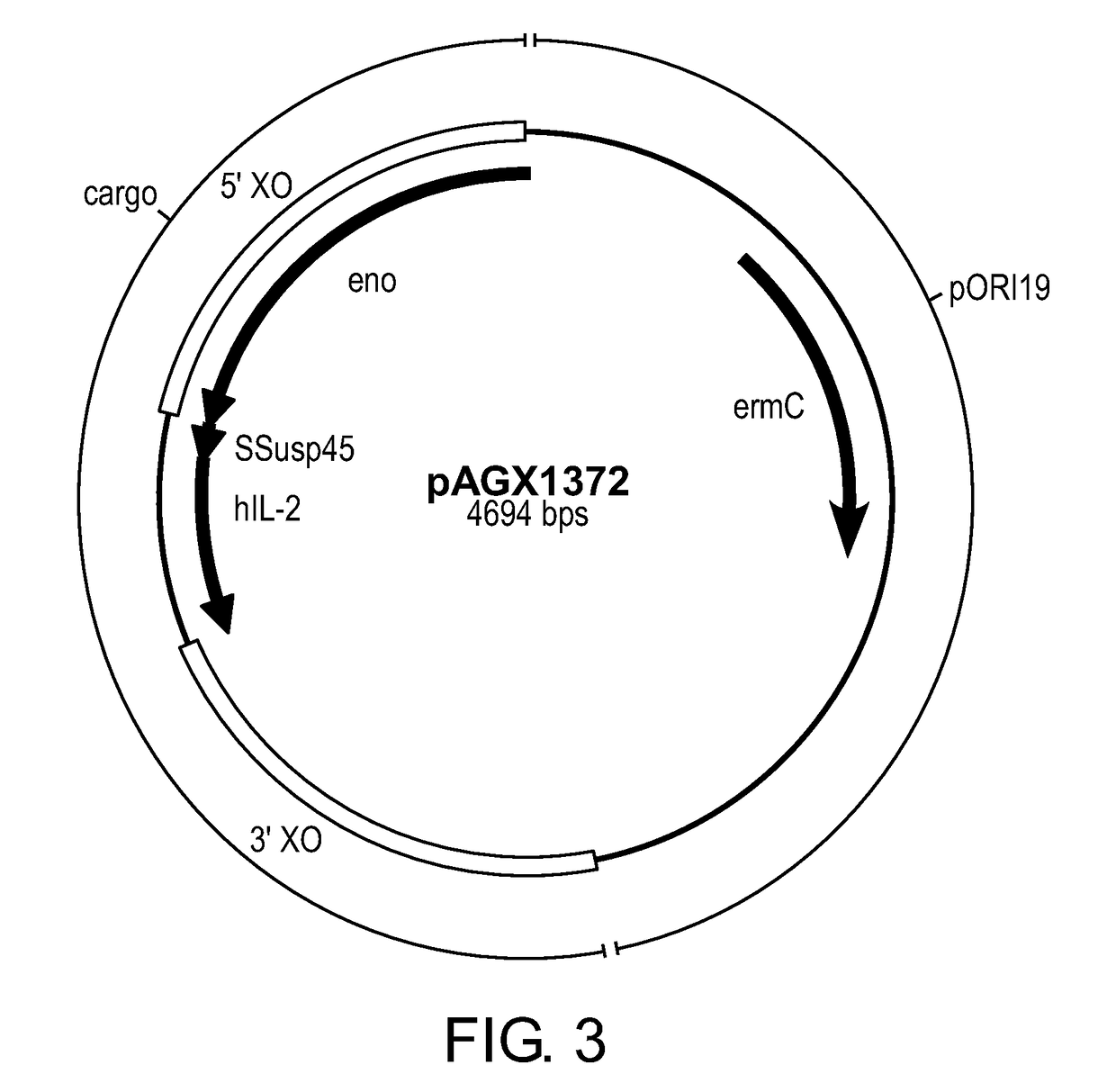Compositions and methods for the treatment of type 1 diabetes
a type 1 diabetes and composition technology, applied in the field of compositions and methods for the treatment of type 1 diabetes, can solve the problems of affecting the normal function of treg cells, and inability to meet the needs of patients, so as to block further autoimmune destruction
- Summary
- Abstract
- Description
- Claims
- Application Information
AI Technical Summary
Benefits of technology
Problems solved by technology
Method used
Image
Examples
example 5
elivers Low Doses of hIL-2 to the GI Tract of Non-Obese Diabetic Mice after Oral Administration
[0285]This experiment involved the Lactococcus lactis strain expressing human IL-2 (LL-IL-2) as described herein, e.g., in Example 1.
[0286]Live Bacteria
[0287]The concentrations of live bacteria (CFU / tissue and CFU / g) in different tissues of the GI tract were measured at different time-points after a single dose administration of 1010 CFU of LL-IL-2 by oral gavage. The results are depicted in FIGS. 14A and 14B, respectively, in which each bar represents an average of 3 mice (n=3). Referring to FIG. 14A (CFU / tissue), significant amounts of LL-IL-2 bacteria were found in the caecum (CAE), the proximal colon (COP), and the distal colon (COD) after 2, 4, 6, and 8 hours. The bacterial concentrations in the small intestine were found to be below 106 CFU / tissue. Referring toFIG. 14B (CFU / g), concentrations of LL-IL-2 bacteria were found in the proximal small intestine (SIP), the distal small intes...
example 8
inetic Profiling of Orally Administered LL-IL-2 Alone in Comparison to LL-PINS+LL-IL-2
[0307]Bacterial Culture
[0308]Bacteria were cultured as previously described in Takiishi, T. et al., J. Clin. Inv. 2012, 122(5): 1717-1725. For example, LL-pT1NX and LL-PINS were cultured in GMI7TE medium (M17 broth supplemented with 0.5% glucose, 200 μM thymidine, and 5 μg / mL erythromycin). LL-IL-2 was cultured in GM17T medium (M17 broth supplemented with 0.5% glucose, and 200 μM thymidine). Stock suspensions of the LL strains were stored at −80° C. in glycerol. Stock suspensions were diluted 1 / 1000 in growth media (GMI7TE or GM17T, respectively) and incubated for 16 hours at 30° C., reaching a saturation density of 2×109 CFU / mL. Bacteria were collected by centrifugation for 10 minutes at 4° C. and 2900 rpm and concentrated 10-fold in BM9T medium (5×M9 salts, 10% casitone, 10% glucose, 0.5 M NaHCO3, 0.5 M Na2CO3, 1 M MgCl2, 100M CaCl2, and 100 mM thymidine) for intragastric inoculations. Treatment ...
example 9
Anti-CD3 Antibody Administration Upon Diabetes Remission Rate
[0349]An anti-CD3 antibody dose finding study was performed in mice. Mice with a starting blood glucose level of greater than 200 mg / dl were dosed with 2.5 μg / day; 5 μg / day; 10 μg / day; 25 μg / day; or 50 μg / day of an anti-CD3 antibody (teplizumab) through IV injections. Dosages of 25 μg / day or 50 μg / day exhibited some toxicity. Treatments were given over a 5 day period, which means that a cumulative anti-CD3 antibody dosage was 12.5 μg; 25 μg; 50 μg; 125 μg; or 250 μg. The treatment group receiving 10 μg / day resulted in a maximal remission induction of approximately 50%. However, in order to reduce toxicity over a longer period of treatment, the dosage of 2.5 μg / day (12.5 μg cumulative) was selected, which is considered a sub-therapeutic dose (low-dose). Treatment with 2.5 μg / day of anti-CD3 antibody was less effective than at the higher 10 μg / day, and resulted in a remission induction of approximately 20%.
[0350]Similar to E...
PUM
 Login to View More
Login to View More Abstract
Description
Claims
Application Information
 Login to View More
Login to View More - R&D
- Intellectual Property
- Life Sciences
- Materials
- Tech Scout
- Unparalleled Data Quality
- Higher Quality Content
- 60% Fewer Hallucinations
Browse by: Latest US Patents, China's latest patents, Technical Efficacy Thesaurus, Application Domain, Technology Topic, Popular Technical Reports.
© 2025 PatSnap. All rights reserved.Legal|Privacy policy|Modern Slavery Act Transparency Statement|Sitemap|About US| Contact US: help@patsnap.com



